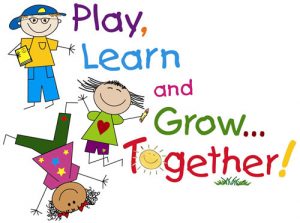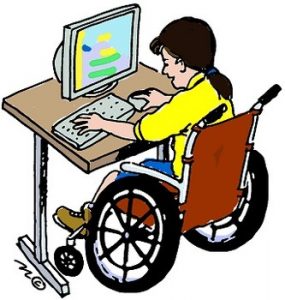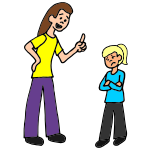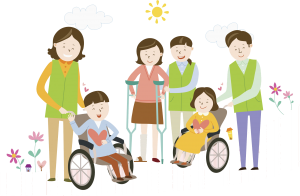Thoughts on Therapy
By Colleen Tomko
One of the most important things to learn about a child or anyone who has a disability is that no matter what disability they have, they are always more similar to others than they are different. The disability is “one part” of the person, “one characteristic;” it does not define who they are.

All children learn skills by interacting and being nurtured in their natural environments. They also learn skills by interacting with each other. When children happen to have disabilities, they still have that same need to interact and be nurtured in their natural environments. Natural settings being those settings where the child would typically be if they did not have a disability, i.e., home, daycare, regular education, and community activities. Of course, they may have some additional needs. Nevertheless, they remain first and foremost children who have a need to experience the same things other children do, or do not, for the same reasons.
Therapy designed to “fix” a child is not as effective as therapy designed to empower a child to successfully use their abilities. When the focus of change is on adapting regular environments to meet the child’s needs versus changing the child, it reduces the barriers that perpetuate exclusion. Instead of attempting to make all children be the same, a greater quality of life can be achieved when the effort is on making valued experiences accessible to every child.

Therapy and services benefit children when they enhance their learning and functioning in natural environments and at their individual levels. For children born with disabilities, they are acquiring skills for the first time. There is no former capacity. When their therapy emulates rehabilitation, which is the process of restoring to a former capacity, it is essentially attempting to restore to “other children’s” levels of capacity. Instead of rehabilitation, the goals of therapy need to support the family’s and child’s vision of where it is desired for the child to live, work, and spend leisure time as an adult, as well as what types of friendships and relationships are desirable.
Problems of learning how to reenter the real world can be avoided if a child never leaves the natural settings for “special” settings in the first place. Problems of generalizing skills to the settings where the child needs to use the skills can also be avoided if they are first learned in the natural settings. Children with disabilities need even greater exposure to natural environments and experiences so they can learn to function using their abilities. As with any child, the less exposure to a situation, the less equipped they will be to deal with it.
A child’s needs are not determined by what the system has to offer, or where the system has to offer it. A trade-off of not experiencing what most children do, over having specific needs met, does not provide children with as fulfilling of a life as having both. Keeping children in natural settings with their peers gives them appropriate modeling of desirable skills. It maximizes the shared experiences with others that are critical to forming relationships and friendships. When all of a child’s needs are met in an integrated way, it enhances every area of their life.
Simply because a person is labeled as functioning at a certain age level, doesn’t mean they should be treated as if they are that age. That type of reasoning would lead to adults still playing with preschool toys. Children need “age-appropriate” activities adapted to their level of functioning. Regardless of how their bodies function, they don’t remain infants or young children physically or emotionally.

If a child’s disability limits their potential to learn a skill then the child needs to be provided with alternative methods of functioning and the necessary supports. The generic answer should not be to remove the child to a “special” environment. Therapy then needs to assist the child by adapting natural environments, teaching skills to use assistive technology, and helping him or her achieve interdependence with others. With interdependence, children learn how to interact with each other to meet their needs, much like adult society where we depend on others to provide many of the things we need.
It leads away from being dependent solely on paid professionals. Interdependence allows the child to have others who know and care about them understand how to meet their needs and interact with them.

As much as others desire to teach a child skills of independence, the methods of teaching have as great if not a greater significance than the actual skill being taught. If you think about it, when an adult controls everything, what, when, where, and how a child will do something, it’s not really teaching independence. When a human being is taught to simply be moved around and controlled by others there’s a loss of respect and dignity. Children should not grow up thinking it’s “ok” for someone to simply undress them, push their bodies around and do whatever is asked of them. If we truly want to teach children independence, then they need to learn that they have control over their lives, bodies, and actions.
All children have teachable moments when they are better able and highly motivated to learn. It is not likely that a child’s teachable moment will always coincide with their scheduled therapy session. Incorporating therapy techniques and methods naturally into a child’s daily routines can increase effectiveness. This way therapy can more likely be implemented at teachable moments, when, and where it is most effective and relevant to the child. Techniques can be practiced at appropriate times when a child is naturally engaged in activities that require the skills they are learning, and not just a few times a week in a therapy session.
Activities that are meaningful and purposeful to the child increase their attentiveness, motivation, and desire to participate. Therapy becomes meaningful when it helps a child interact and learn about the real world. When therapy is incorporated into activities that are relevant in a child’s life, they will be more likely to use and practice those skills in their daily activities. Ideally, children should not even be aware that they are receiving therapy. When children lead the activities, they are doing what is meaningful to them. If activities are led by an adult, they may or may not be meaningful to the child.
If every person who interacts with the child regularly is knowledgeable and consistent with the techniques and methods practiced in each area of therapy, it will help the child learn how to use the skills together. This way the child does not simply only do speech when they are with a speech therapist or only do fine motor when they are with an occupational therapist. They practice all skills together throughout every day whenever and wherever it is most appropriate.
 The things that give value to any child’s life remain the same whether or not they have a disability. Respect, dignity, relationships, friendships, and a sense of belonging are stronger indicators of a quality life than are the quantities of therapies and services a child receives. With that in mind, the purpose of therapy and services needs to be kept in perspective, that is they should remain an enhancement to a child’s life, not a replacement.
The things that give value to any child’s life remain the same whether or not they have a disability. Respect, dignity, relationships, friendships, and a sense of belonging are stronger indicators of a quality life than are the quantities of therapies and services a child receives. With that in mind, the purpose of therapy and services needs to be kept in perspective, that is they should remain an enhancement to a child’s life, not a replacement.
Material Copyrighted 1996 Kids Together, Inc.
May be copied for non-profit use only. Please notify us of your intentions.
Can be linked but not copied onto other websites.
